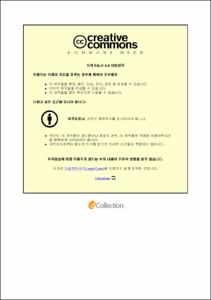Development of Orthotopic Colorectal Cancer Mouse Model and Local Photothermal Therapy using Nano Functionalized Stent
- Abstract
- Background and purpose: Colorectal cancer (CRC) is the third most common type of cancer with a global incidence of over 1.3 million cases per year. Despite recent therapeutic progress, the prognosis of CRC is still poor and observational studies in CRC populations provide limited insights into disease biology. The colorectal cancer animal model is a very useful tool to explore tumor initiation and development. In the past year, many methods have been used to building up the mouse model including the subcutaneous injection and cecal wall injection or implantation. But these models have limitations such as the loss of the original microenvironment, high cost or slow tumor growth. Another problem is all above method is not suitable to be the research model of stent placement in the colon.
Additionally, as one treatment method, the self-expanding metallic stents have shown its efficacy and have been proposed in the management of colorectal stenosis. The re-stricture as one complication after stent placement achieved 9.4%-17% which usually due to cancer progression or tissue hyperplasia. From now on, there still no good method to deal with these kinds of complications.
In this study, we explored the endoscopy guided tumor cells injection for building up the CRC mouse model. After successful CRC modeling establishment, we applied it to a local photothermal therapy to treat the CRC by a branched gold nanoparticle (BGNP) coated stent.
Materials and methods: In chapter I, we use an endoscopy-guided tumor cell injection method to build up the orthotopic CRC model. Twenty male nude mice with 6 weeks of age were used for the RFP HCT-116 cell injection. The injection success rate, tumor formation success rate and complications were recorded. In chapter II, 40 mice underwent the endoscopy-guided RFP HCT-116 cell injection. After the tumor formation, thirty mice in which tumor size achieving grade 4 were chosen as an experimental model and divided into 3 groups with 10 mice in each group. Group A underwent the branched gold nanoparticles (BGNP) coated stent insertion, group B underwent normal stent insertion plus the laser treatment (0.8W/cm2 and 60s). The mice in group C were given BGNP stent insertion plus the laser treatment (0.8W/cm2 and 60s). One week later, all of them alive mice were sacrificed and the samples were collected for histology and molecular analysis.
Results: In chapter I, we established a rapid and efficient method to build up the colon cancer mouse model by using the endoscopy-guided mucosal injection. The technical success rate was 90% and the tumor formation rate in the colon lumen was 90%. The tumor size achieves grade score 4 spending 12-16 days (median time 14 days). During the endoscopy-guided mucosal injection, 2 mice underwent the colon perforation. One mouse died due to the colon perforation 3 days after the cell injection. One mouse has a tumor formation out of the colon lumen and showed a big tumor in the abdomen cavity.
For chapter II, 30 nude mice with tumor grade score 4 were chosen as the experimental mouse model. All of the mice underwent stent placement successfully by fluoroscopy guidance. The laser treatment was performed in all 20 mice of group B and group C using the near-infrared laser fiber with the power of 0.8W/cm2. There was no mouse death during stent placement and near-infrared laser treatment. Eight mice died 3 days after the laser treatment. There are 3 mice in group A and 3 mice in group B due to the colon obstruction. In group C, on mouse died due to colon obstruction and one mouse died due to colon perforation. The tumor grade score did not show a significant difference among the 3 groups before (p=0. 664) and after stent placement (p=0. 710). After laser treatment, the tumor grade score increased from 1 to 2 or 3 in groups A and B, whereas the tumors in group C were unchanged or undetectable. Hence, we found a significant difference between group C and A (p= 0.008), also between group C and B (p<0.001).
Conclusion: Chapter I: The endoscopy guided colonic submucosa injection technique was used for establishing a colon cancer mouse model with a high success rate and fast tumor growth. Chapter II: We found the branched gold nanoparticles coated stent plus the laser irradiation can effectively inhibit colon tumor growth. It will overcome the shortcomings of restenosis and help the stent to keep the lumen smoothly for a longer time.
- Issued Date
- 2019
- Awarded Date
- 2020-02
- Type
- Dissertation
- Alternative Author(s)
- Hong-Tao Hu
- Affiliation
- 울산대학교
- Department
- 일반대학원 의학과
- Advisor
- Chang, Suhwan
Jeon, Jae Yong
- Degree
- Doctor
- Publisher
- 울산대학교 일반대학원 의학과
- Language
- eng
- Rights
- 울산대학교 논문은 저작권에 의해 보호받습니다.
- Appears in Collections:
- Medicine > 2. Theses (Ph.D)
- 파일 목록
-
-
Download
 200000285141.pdf
기타 데이터 / 4.43 MB / Adobe PDF
200000285141.pdf
기타 데이터 / 4.43 MB / Adobe PDF
-
Items in Repository are protected by copyright, with all rights reserved, unless otherwise indicated.